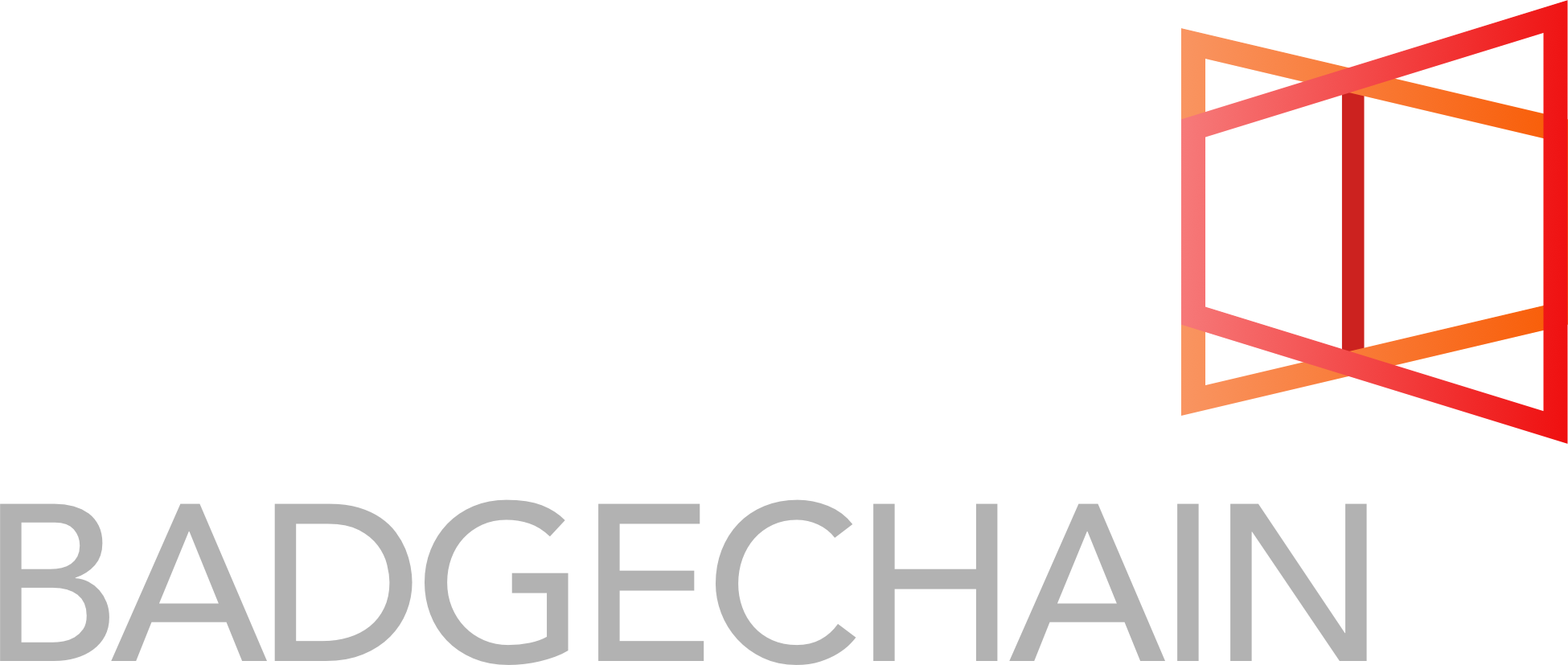
In conjunction with the members of the Core BadgeChain team, I wanted to take a moment to review the work of BadgeChain over the last year and discuss our future path.
This post will serve as a comprehensive report of our organization’s activities throughout the preceding year (2015–2016).
Getting started
Almost a year ago Kerri Lemoie wrote this piece on the current state of open badges and the role of Mozilla in leading its innovation. Published during MozFest 2015, this post served as an alarm for badge experts and enthusiasts. Doug Belshaw indicated that the future still remained bright despite the concerns that Kerri addressed.
Around the same time, a group of original open badges team members and experienced badge enthusiasts and contributors began meeting to discuss the future of open badges as a learning recognition tool. We called this group, BadgeChain. Our members include the founders of badges and experts in the ecosystem, policy, and technology. Three things united us as we began to investigate opportunities. First, we noted that there were concerns about the increasing amount of fragmentation in the field. Second, we recognized the need for a new decentralized and efficient transport mechanism for open badges. Third, we were interested in the possibilities of the blockchain, and related technologies as a possible vehicle for this work.
This interview with Vinay Gupta on the Future Thinkers podcast and his discussions about Ethereum as a platform for a decentralized web inspired our thinking. From this starting point, we collected and shared every possible link discussing blockchain, bitcoin, ethereum, and related technologies. You can review many of these links here.
One thing that was immediately apparent to us as BadgeChain was the difficulty of understanding and explaining the complexities inherent in these new spaces. Our goal was to try to understand the logic behind these decentralized technologies, and consider possibilities for not only badging, but also opportunities in education and beyond. Our consideration included badges but extended beyond simply placing badges on the blockchain. This was, and still continues to be, a search to identify ways to leverage these technologies to make badges and other personal data verifiable by improving upon its permanence.
Next Steps
After months of private weekly meetings, we made our intentions public under the name BadgeChain. We launched a website and agreed to start blogging as a collective on our Medium publication. Over the coming months we continued to meet in private as we researched, discussed, and debated possibilities in this space.
We started a series of community calls and podcast interviews to work as a “thinkubator” with the community. One of the reasons for this was we identified the need to educate the field about these technologies and their possible role in education. The Core BadgeChain team also needed an opportunity to share our thinking openly online and receive critique from others.
This past June, a position statement we submitted to W3C Blockchains and the Web, was accepted and allowed us to participate in a two day workshop with leaders in the web and blockchain technologies. The aim of the workshop was to propose how W3C could lead standards development on web interactions with blockchain and also how aspects of blockchain may improve how the web works. Not only was this workshop enlightening it also validated much of the thinking and research we’d been pursuing over the year. Also, it connected us with companies and organizations pursuing similar data needs as the Open Badges ecosystem.
Our growth
Throughout this exploratory phase, the BadgeChain team has been intrigued by the possibility of embracing blockchain and related technologies to build something new. Our mission statement identified a focus on using research, advocacy, and development to explore how decentralized technologies can advance learning recognition and digital credentialing. Our investigations revealed that blockchain, instead of being a monolithic technology, is instead an aspect of decentralized technologies with much more potential than is realized in BitCoin and financial tech. Blockchain as a technology, itself, provides a mechanism to decentralize data and transactions so that no single entity owns our data. Not only is it not inherently evil (as described in this post), blockchain and decentralized technologies can give us more control over our personal data than we have now.
The first year of BadgeChain has been a growing and learning process. Our approach and mission have been under constant internal review/revision. Our focus on use of “the blockchain” has also changed. With this, our examination of various technologies, and the terms used to identify these technologies have also changed. As we have engaged in this work, the larger field investigating blockchain and related technologies has evolved as well. We continue to focus on the philosophies and potential that excited us as we began this journey. We remain convinced that the investigation and development of decentralized web and ledger technologies holds distinct promise.
Next steps
Over the summer of 2016 we’ve been busy behind the scenes advancing BadgeChain. While we grappled with evolving technology and considered the future of learning recognition and badges, we chose to “press pause” on most of our public-facing posts, community calls, and podcasts. During this quiet time we continued to present and discuss our work at various meetings and conferences. The most important work that we’ve conducted is a review and audit of the processes that will make BadgeChain a successful initiative over the next year.
Perhaps one of the most important outcomes was our decision to recommit to working in a more open way, and to involving the community more deeply in the BadgeChain work. We’ve come to terms with the idea that there is too much work for our small group of devoted volunteers to accomplish. We, the members of the Core BadgeChain group, want to provide opportunities to integrate the learning recognition community into the decisions and work of the collective. Additionally, we believe the open badges community would benefit from increased openness and community participation. We’ll have more details about these thoughts in the coming week.
Over the past year, we’ve encountered many misconceptions about what these products and platforms are and what they could be. During all of our discussions about the impact of blockchain and decentralized web technologies on education, we believe that there is a need to develop products. So we’re excited to announce that we’re experimenting with developing in this space. The challenge is that we’re discussing and problematizing vaporware. It’s time to start building and breaking things online…and then dive into the questions of trust, credibility, and immutability related to these tools.
As we close our first year working on BadgeChain, we’ve learned a great deal and believe that there’s a lot left to do. We’re excited to take this next step, and look forward to having more people join us.
Thank you to Carla Casilli and Kerri Lemoie for their careful revisions and suggestions to this post.
Originally published at W. Ian O’Byrne.

Follow Us